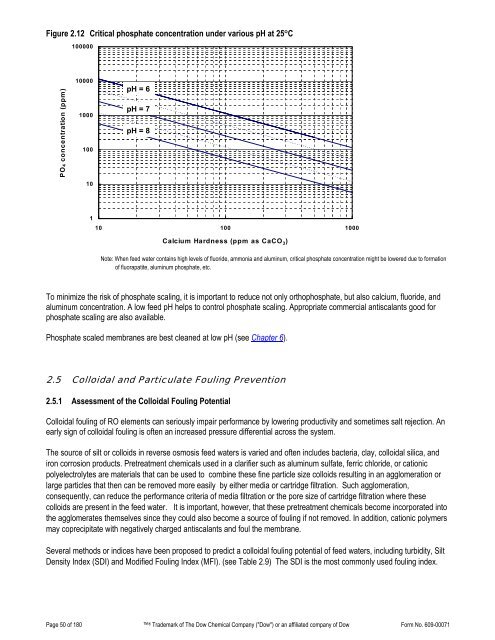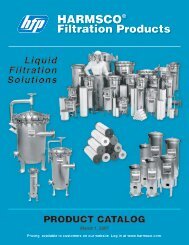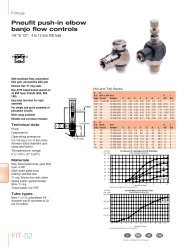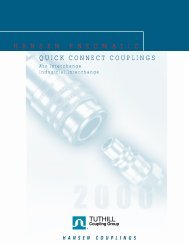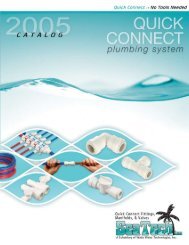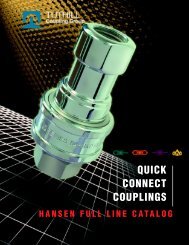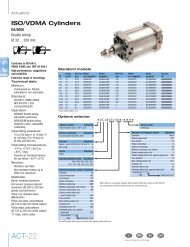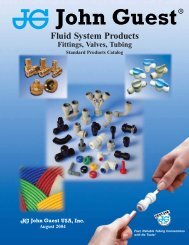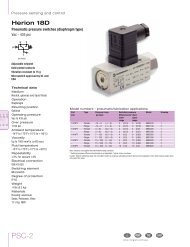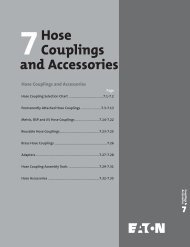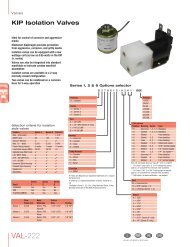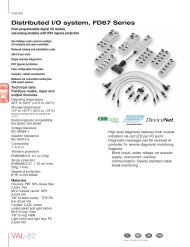FilmTec Technical Manual - Chester Paul Company
FilmTec Technical Manual - Chester Paul Company
FilmTec Technical Manual - Chester Paul Company
Create successful ePaper yourself
Turn your PDF publications into a flip-book with our unique Google optimized e-Paper software.
Figure 2.12 Critical phosphate concentration under various pH at 25°C100000PO4 concentration (ppm)10000100010010pH = 6pH = 7pH = 8110 100 1000Calcium Hardness (ppm as CaCO 3 )Note: When feed water contains high levels of fluoride, ammonia and aluminum, critical phosphate concentration might be lowered due to formationof fluorapatite, aluminum phosphate, etc.To minimize the risk of phosphate scaling, it is important to reduce not only orthophosphate, but also calcium, fluoride, andaluminum concentration. A low feed pH helps to control phosphate scaling. Appropriate commercial antiscalants good forphosphate scaling are also available.Phosphate scaled membranes are best cleaned at low pH (see Chapter 6).2.5 Colloidal and Particulate Fouling Prevention2.5.1 Assessment of the Colloidal Fouling PotentialColloidal fouling of RO elements can seriously impair performance by lowering productivity and sometimes salt rejection. Anearly sign of colloidal fouling is often an increased pressure differential across the system.The source of silt or colloids in reverse osmosis feed waters is varied and often includes bacteria, clay, colloidal silica, andiron corrosion products. Pretreatment chemicals used in a clarifier such as aluminum sulfate, ferric chloride, or cationicpolyelectrolytes are materials that can be used to combine these fine particle size colloids resulting in an agglomeration orlarge particles that then can be removed more easily by either media or cartridge filtration. Such agglomeration,consequently, can reduce the performance criteria of media filtration or the pore size of cartridge filtration where thesecolloids are present in the feed water. It is important, however, that these pretreatment chemicals become incorporated intothe agglomerates themselves since they could also become a source of fouling if not removed. In addition, cationic polymersmay coprecipitate with negatively charged antiscalants and foul the membrane.Several methods or indices have been proposed to predict a colloidal fouling potential of feed waters, including turbidity, SiltDensity Index (SDI) and Modified Fouling Index (MFI). (see Table 2.9) The SDI is the most commonly used fouling index.Page 50 of 180 ® Trademark of The Dow Chemical <strong>Company</strong> ("Dow") or an affiliated company of Dow Form No. 609-00071


